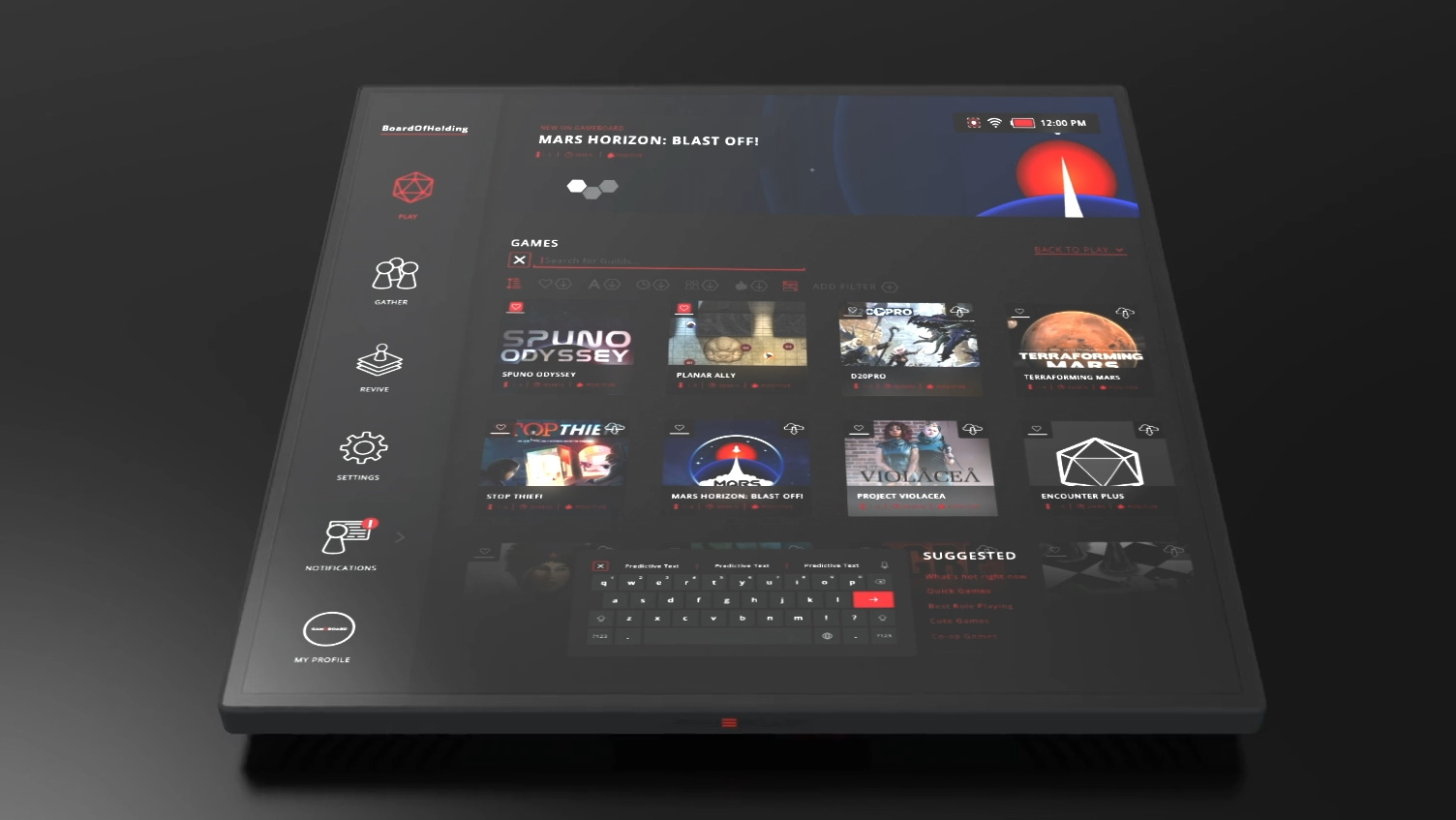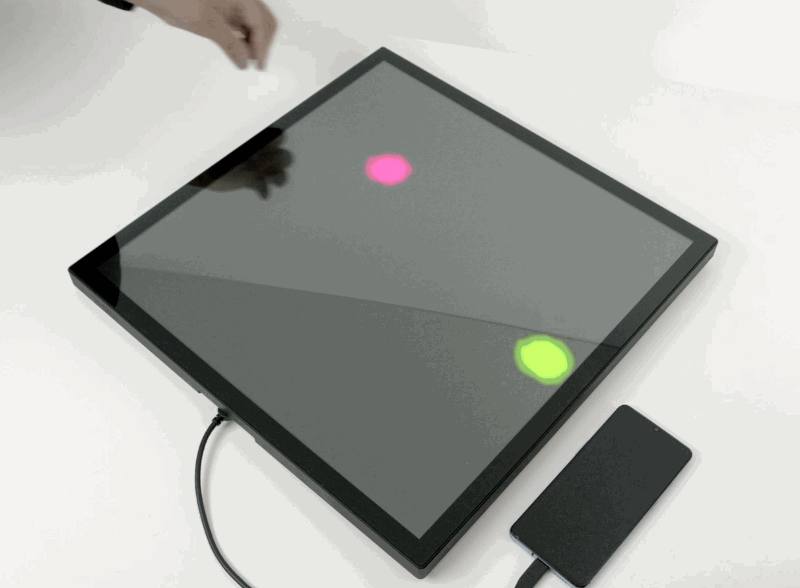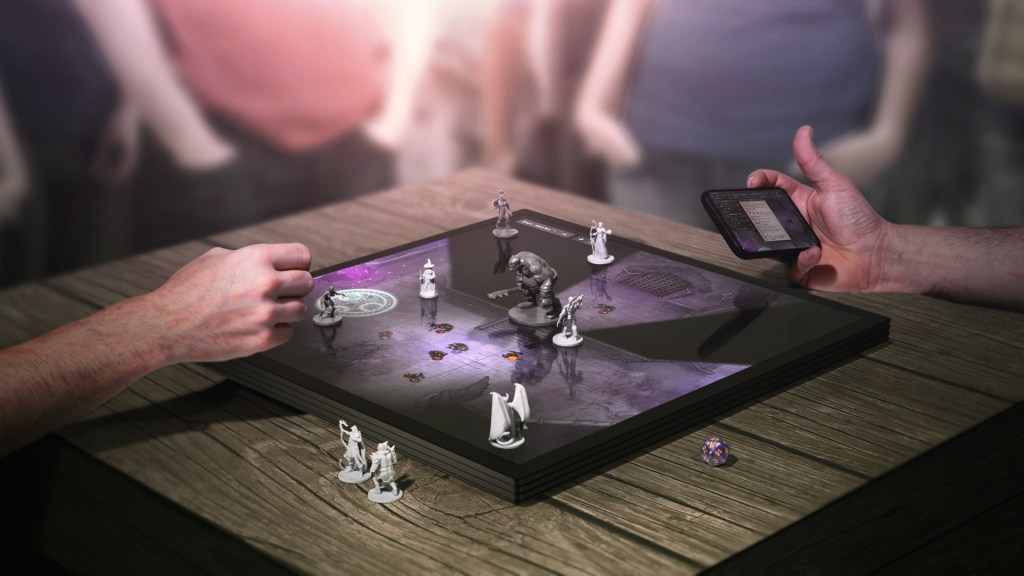The tabletop gaming industry has exploded over the last few years as millions discovered or rediscovered its joys, but it too is evolving — and The Last Gameboard hopes to be the venue for that evolution. The digital tabletop platform has progressed from crowdfunding to $4 million seed round, and having partnered with some of the biggest names in the industry, plans to ship by the end of the year.
As the company’s CEO and co-founder Shail Mehta explained in a TC Early Stage pitch-off earlier this year, The Last Gameboard is a 16-inch square touchscreen device with a custom OS and a sophisticated method of tracking game pieces and hand movements. The idea is to provide a digital alternative to physical games where that’s practical, and do so with the maximum benefit and minimum compromise.
If the pitch sounds familiar… it’s been attempted once or twice before. I distinctly remember being impressed by the possibilities of D&D on an original Microsoft Surface… back in 2009. And I played with another at PAX many years ago. Mehta said that until very recently there simply wasn’t the technology and the market wasn’t ready.
“People tried this before, but it was either way too expensive or they didn’t have the audience. And the tech just wasn’t there; they were missing that interaction piece,” she explained, and certainly any player will recognize that the, say, iPad version of a game definitely lacks physicality. The advance her company has achieved is in making the touchscreen able to detect not just taps and drags, but game pieces, gestures and movements above the screen, and more.
“What Gameboard does, no other existing touchscreen or tablet on the market can do — it’s not even close,” Mehta said. “We have unlimited touch, game pieces, passive and active… you can use your chess set at home, lift up and put down the pieces, we track it the whole time. We can do unique identifiers with tags and custom shapes. It’s the next step in how interactive surfaces can be.”
It’s accomplished via a not particularly exotic method, which saves the Gameboard from the fate of the Surface and its successors, which cost several thousand dollars due to their unique and expensive makeups. Mehta explained that they work strictly with ordinary capacitive touch data, albeit at a higher framerate than is commonly used, and then use machine learning to characterize and track object outlines. “We haven’t created a completely new mechanism, we’re just optimizing what’s available today,” she said.

At $699 for the Gameboard it’s not exactly an impulse buy, either, but the fact of the matter is people spend a lot of money on gaming, with some titles running into multiple hundreds of dollars for all the expansions and pieces. Tabletop is now a more than $20 billion industry. If the experience is as good as they hope to make it, this is an investment many a player will not hesitate (much, anyway) to make.
Of course, the most robust set of gestures and features won’t matter if all they had on the platform were bargain-bin titles and grandpa’s-parlor favorites like “Parcheesi.” Fortunately, The Last Gameboard has managed to stack up some of the most popular tabletop companies out there, and aims to have the definitive digital edition for their games.
Asmodee Digital is probably the biggest catch, having adapted many of today’s biggest hits, from modern classics “Catan” and “Carcassonne” to crowdfunded breakout hit “Scythe” and immense dungeon-crawler “Gloomhaven.” The full list of partners right now includes Dire Wolf Digital, Nomad Games, Auroch Digital, Restoration Games, Steve Jackson Games, Knights of Unity, Skyship Studios, EncounterPlus, PlannarAlly and Sugar Gamers, as well as individual creators and developers.

These games may be best played in person, but have successfully transitioned to digital versions, and one imagines that a larger screen and inclusion of real pieces could make for an improved hybrid experience. There will be options both to purchase games individually, like you might on mobile or Steam, or to subscribe to an unlimited access model (pricing to be determined on both).
It would also be something that the many gaming shops and playing venues might want to have a couple of on hand. Testing out a game in-store and then buying a few to stock, or convincing consumers to do the same, could be a great sales tactic for all involved.
In addition to providing a unique and superior digital version of a game, the device can connect with others to trade moves, send game invites and all that sort of thing. The whole OS, Mehta said, “is alive and real. If we didn’t own it and create it, this wouldn’t work.” This is more than a skin on top of Android with a built-in store, but there’s enough shared that Android-based ports will be able to be brought over with little fuss.
Head of content Lee Allentuck suggested that the last couple years (including the pandemic) have started to change game developers’ and publishers’ minds about the readiness of the industry for what’s next. “They see the digital crossover is going to happen — people are playing online board games now. If you can be part of that new trend at the very beginning, it gives you a big opportunity,” he said.

Allentuck, who previously worked at Hasbro, said there’s widespread interest in the toy and tabletop industry to be more tech-forward, but there’s been a “chicken and egg scenario,” where there’s no market because no one innovates, and no one innovates because there’s no market. Fortunately things have progressed to the point where a company like The Last Gameboard can raise $4 million to help cover the cost of creating that market.
The round was led by TheVentureCity, with participation from SOSV, Riot Games, Conscience VC, Corner3 VC and others. While the company didn’t go to HAX’s Shenzhen program as planned, they are still HAX-affiliated. SOSV partner Garrett Winther gave a glowing recommendation of its approach: “They are the first to effectively tie collaborative physical and digital gameplay together while not losing the community, storytelling or competitive foundations that we all look for in gaming.”
Mehta noted that the pandemic nearly cooked the company by derailing their funding, which was originally supposed to come through around this time last year when everything went pear-shaped. “We had our functioning prototype, we had filed for a patent, we got the traction, we were gonna raise, everything was great… and then COVID hit,” she recalled. “But we got a lot of time to do R&D, which was actually kind of a blessing. Our team was super small so we didn’t have to lay anyone off — we just went into survival mode for like six months and optimized, developed the platform. 2020 was rough for everyone, but we were able to focus on the core product.”
Now the company is poised to start its beta program over the summer and (following feedback from that) ship its first production units before the holiday season when purchases like this one seem to make a lot of sense.
(This article originally referred to this raise as The Last Gameboard’s round A — it’s actually the seed. This has been updated.)































Comment